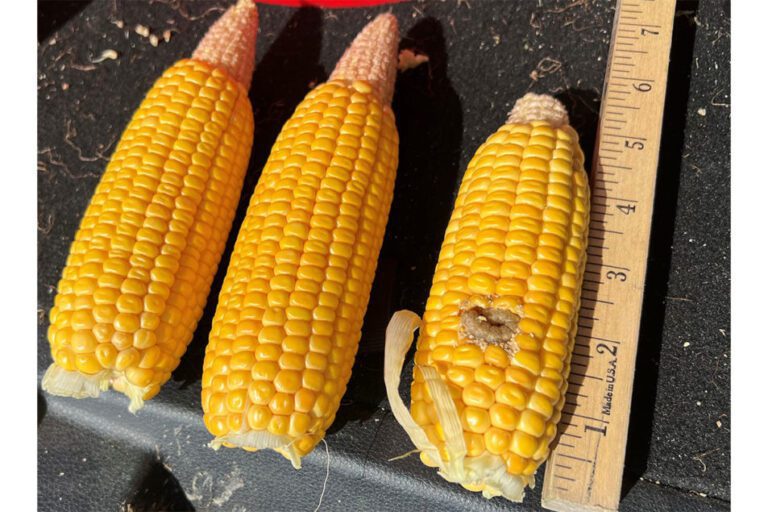KANSAS CITY — Hot temperatures, stifling humidity and the pungent smell of rotting vegetation sound more like a trip to a rainforest jungle, but those were the conditions experienced by some of the 100 or so scouts who participated in the recent Pro Farmer Midwest crop tour.
Split into two groups, half of the scouts began their journey in Sioux Falls, SD, on August 21, while the other half hail from Dublin, Ohio. Over the next four days, the scouts split into several vehicles and set off on various predetermined routes. Covering about 70% of the U.S. corn belt, the scouts stopped every 10 to 15 miles to randomly sample and evaluate the area's corn and soybean crops and estimate reasonable yields for each state using technical formulas and quality inputs. The western half covered parts of South Dakota, Nebraska, Iowa, and western Minnesota, while the eastern scouts traversed Ohio, Indiana, Illinois, and eastern Minnesota. Both teams connected on the evening of Aug. 24, the fourth and final day of the tour, at the Mayo Civic Center in Rochester, Minn., to review their data and share overall impressions of this year's corn and soybean crops.
The week's sharp temperature rises and its impact on crops was a focal point, especially for the western half of the tour. In the middle of a densely populated cornfield, temperatures can jump another 20°. Several scouts noticed the smell of silt as they collected corn samples in Nebraska, indicating that the crop had passed the point of maturity and was beginning to rot.
“In the 20+ years I've been doing this crop tour, we've never been through anything like this,” shared one scout.
Variability was the word often used to describe the samples collected from most states. Scouts noticed healthy fields with 200-plus bushels per acre corn yields and lush soybean plants, while other areas just a few miles down the road had corn fields filled with the aroma of silage and dried guts with drooping ears and soybean plots showing signs of white mold. and sudden death. Hail and wind damage were evident in many cornfields, as were tar spots, which first appeared on the final leg of the tour in Minnesota.
While farmers and crop veterans have continuously confirmed that this crop was much better than last year, they also acknowledged that the crops needed timely rains to adequately finish the season. But for some fields it was too late.
“Some of these crops aren't drying out, they're dying,” said Chip Flory, AgriTalk radio host and director for the western half of the crop tour, adding that growers should prepare for an early harvest. “It's just not good weather at the finish. You want to drop the crop all the way, but it's in the chickens now.'
As expected, crops in dry areas suffered more than irrigated fields. And since the weather outlook does not call for near-term moisture events, irrigation was likely the only tool available to maximize yields. Otherwise, some crops could lose up to 20% of their yield potential, according to an analyst on the tour.
“This is the crispest dry land we've ever come across,” Mr Flory said.
While scouting in Nebraska, he noticed that many of the state's soybean fields were turning various shades of green and yellow with brown spots throughout.
“These 10 days are critical for the soybean crop and if we agree that a little rain can help the crop, then we also have to agree that if we have the conditions we expect in the next three days after that it will hurt that crop,” he said.
However, there was one major bright spot on the tour. Scouts on the eastern leg of the crop tour noted excellent specimens throughout Ohio.
“Ohio is a hit or miss state and they seem to have more hits than misses out of anything I've seen so far,” said Brian Grete, editor at Pro Farmer and tour director for the eastern half of the tour. .
On Aug. 25, Pro Farmer released its final 2023 U.S. corn and soybean crop estimates after compiling the raw data from a record number of samples that participated in the tour this year, while factoring in other inputs such as the maturity of cultivation and the adjustments of acres. They pegged the 2023 U.S. corn yield at 172 bushels per acre, down 1.8 percent from the 175.1 bushels per acre forecast by the U.S. Department of Agriculture on Aug. 11. Pro Farmer estimated U.S. soybean yield for 2023 at 49.7 bushels per acre, reduced. from USDA's August forecast of 50.9 bushels per acre.

